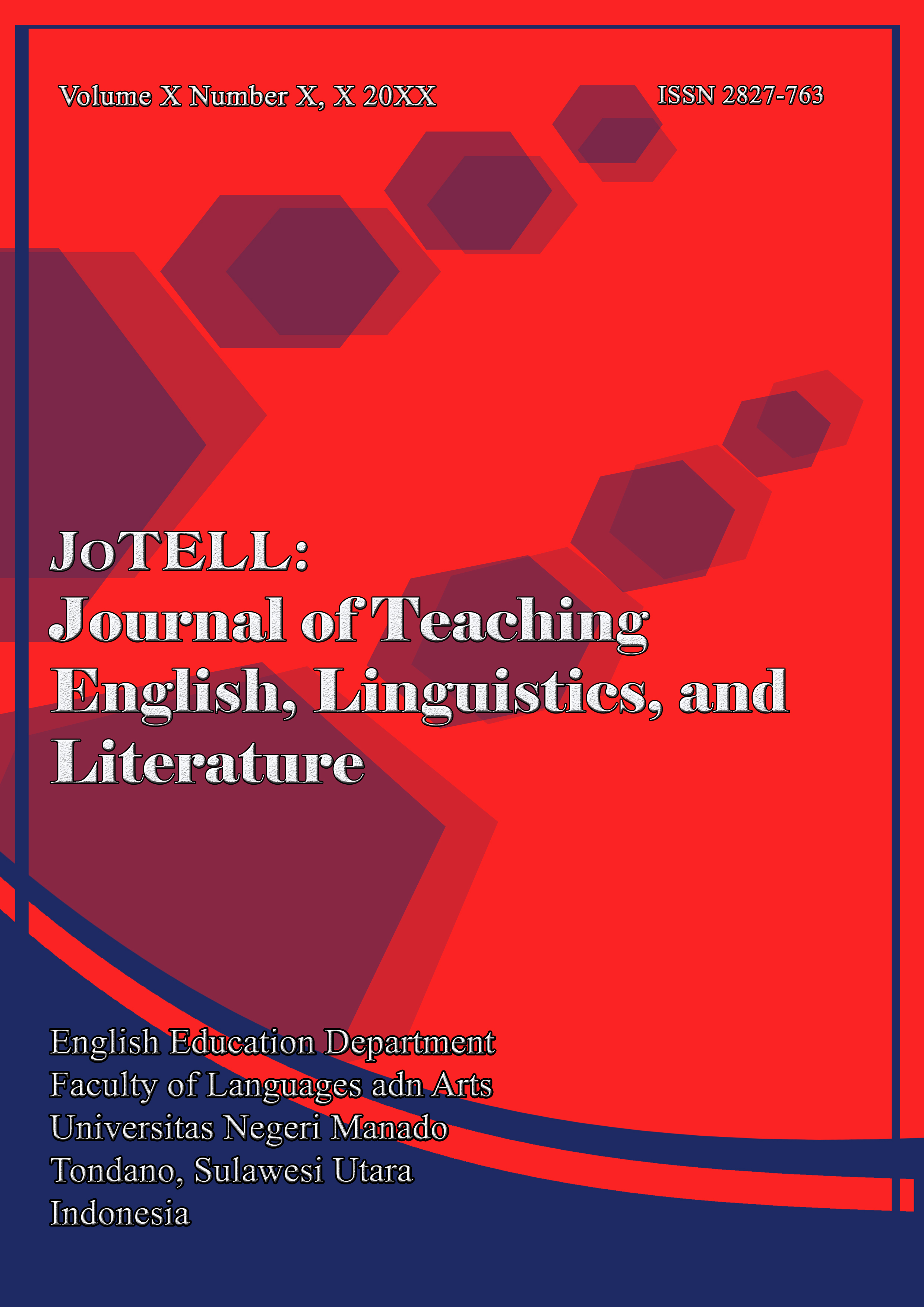Freedom From The Traumatic Effect In "Safe Haven" Movie Script
DOI:
https://doi.org/10.36582/jotell.v4i3.11929Keywords:
raumatic Effect,Freedom,Domestic Violence,Safe HavenAbstract
This study explores the theme of freedom from traumatic effects as depicted in the film "Safe Haven," directed by Lasse Hallström and based on Nicholas Sparks' novel of the same name. The narrative follows the protagonist, Katie, who escapes an abusive marriage to find solace in a small coastal town. The study highlights Katie's psychological struggle with post-traumatic stress disorder (PTSD) resulting from her abusive past, emphasizing the impact of isolation, fear, and violence on her mental well-being. Through a qualitative analysis of the film's script, the research delves into Katie's journey towards healing, showcasing her efforts to build new relationships and establish a sense of safety in her life. Data collection includes main sources like the film itself and sources like books, papers, and the internet. The researcher uses a psychological approach to analyze the movie, focusing on the main character's battle for freedom. Ultimately, the film serves as a powerful testament to the resilience of survivors of domestic violence and the importance of love and support in overcoming trauma.
References
Creswell, J. W., & Creswell, J. D. (2017). Research design: Qualitative, Quantitative,
and Mixed Methods Approaches. SAGE Publications.
Dana Stevens. (2013). Safe Haven script in PDF format.
Freud, S. (1901). Psychopathology of Everyday Life. www.Abika.com
Gordon Edlin, Eric Golanty - Health & Wellness-Jones & Bartlett Learning (2023).
(n.d.).
Jona Sumampouw, R. (n.d.). THE ANALYSIS OF THE MAIN CHARACTER’S QUARTER
LIFE CRISIS FROM THE MOVIE “SOUL” BY PETE DOCTER.
Lavazza, A. (2015). Erasing traumatic memories: when context and social interests
can outweigh personal autonomy. Philosophy Ethics and Humanities in Medicine,.
Lucid Design Concepts Nicholas Sparks. (n.d.). Retrieved June 4, 2025, from
https://luciddesign.co/work/nicholas-sparks/
Liando, N. V. F., & Tatipang, D. P. (2024). Enlightened minds: Navigating the nexus
of artificial intelligence and educational modernization. Penerbit Tahta Media.
Liando, N. V., Dallyono, R., Tatipang, D. P., & Lengkoan, F. (2023). Among English,
Indonesian and local language: Translanguaging practices in an Indonesian EFL
classroom. Indonesian Journal of Applied Linguistics, 13(1), 204-216.
Tatipang, D., Oroh, E. Z., & Liando, N. V. (2021). The application of mind mapping
technique to increase students’ reading comprehension at the seventh grade of
SMP. KOMPETENSI: jurnal Bahasa dan seni, 1(03), 389-397.
Liando, N. V. F., Tatipang, D. P., & Wuntu, C. N. (2023). First Language Interfere in
EFL Classes: Revealing Students’ Perspectives and Teachers’ Reasons in
ELL. REiLA: Journal of Research and Innovation in Language, 5(1), 77-88.
Macaluso, N. (2024). Run Like Hell.
Pongoh, E., Oroh, E. Z., & Mamentu, A. C. (n.d.). SURVIVAL FOE BETTER LIFE IN
THE JUNGLE BOOK.
Rorintulus, O. A. (2018). GENDER EQUALITY AND WOMEN’S POWER IN AMERICAN
INDIAN TRADITIONAL CULTURE IN ZITKALA-SA’S SHORT STORIES.
Rosen, & Marvin. (n.d.). The Effects of Stress and Anxiety on the Family.
Safe Haven (film) - Wikipedia. (n.d.). Retrieved June 5, 2025, from
https://en.wikipedia.org/wiki/Safe_Haven_(film)
The Editors of Encyclopaedia Britannica. (1998). Script | Writing, Poetry, Drama.
Wikipedia contributors. (2024). Psychological trauma.
Wuntu, C. N. (2015). Connecting the Vanishing Flora, Fauna and its Relation to
the Indian Removal Policy as seen in Cooper’s The Leatherstocking Tales.
Downloads
Published
How to Cite
Issue
Section
License
Copyright (c) 2025 JoTELL : Journal of Teaching English, Linguistics, and Literature

This work is licensed under a Creative Commons Attribution-ShareAlike 4.0 International License.












